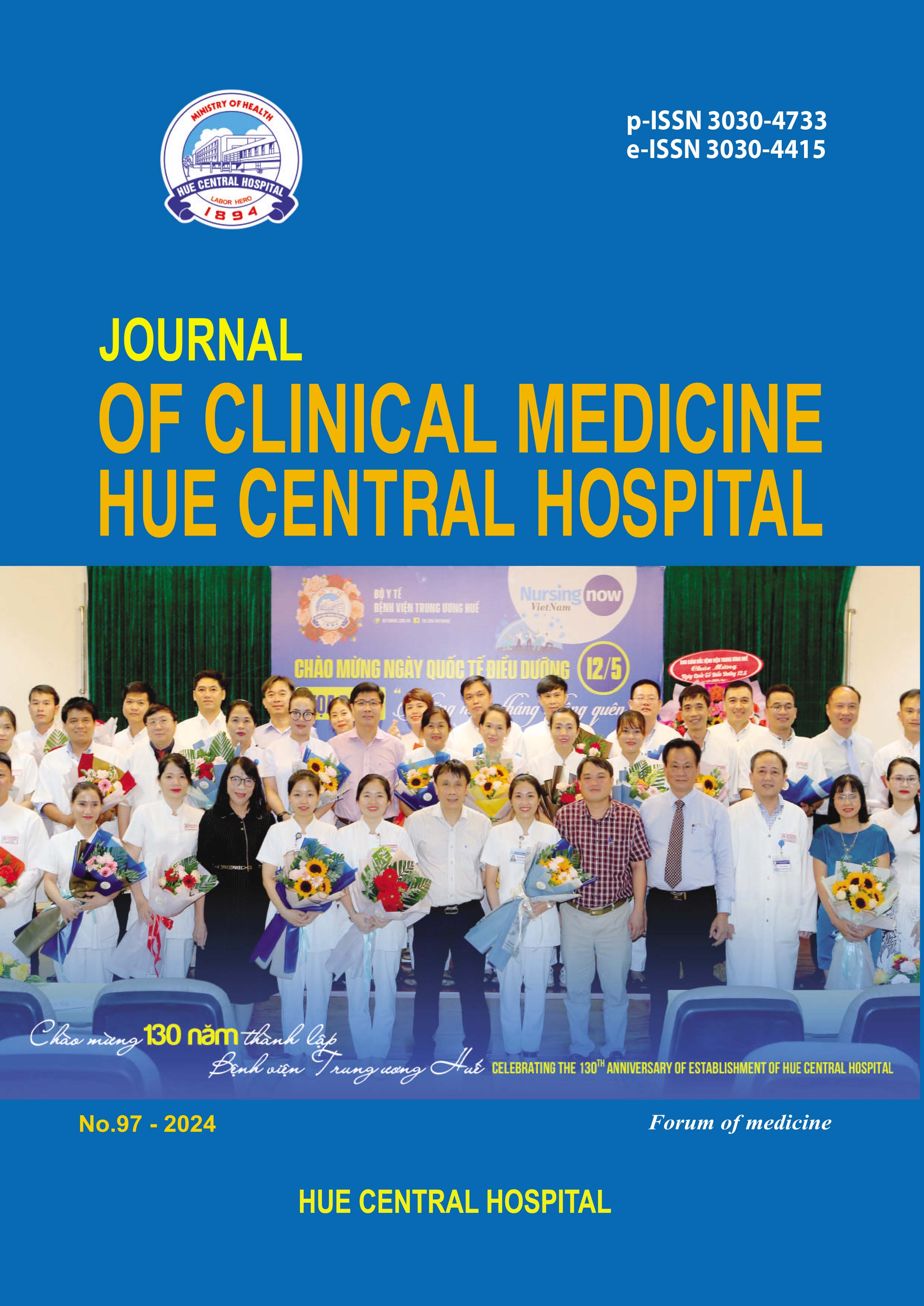Tóm tắt
Objectives: The study aims to evaluate the safety of early - release radial compression time in patients with radial air-inflated pressure devices and to compare the efficacy of early - release radial compression time in patients with radial air - inflated pressure devices with standard methods. Short-time hemostasis is one of the strategies to prevent complications related to the radial artery compression band. Long - time hemostasis in standard protocol may not be necessary.
Methods: 141 patients having radial air-inflated devices were observed. Group 1 contains patients with the early releasing method in which medical staff releases 10 percent of air volume in the compression device every hour. Group 2 contains patients with the standard method of medical staff releasing 10 percent of air volume in compression devices every two hours. The bleeding rate, pain score, and discomfort level were compared between the two groups.
Results: There was no statistical difference in the distribution of baseline characteristics. 2.8% of the group 1 developed swollen in the radial area, which had a diameter of less than 5 cm and needed to re - inflate again. There was no statistical difference between the two groups in bleeding percentages, with a p - value of 0,496 (p > 0.05). There is an obvious statistical difference in pain score and discomfort level between group 1 and group 2. The patients in Group 1 had less pain and lower discomfort level than Group 2.
Conclusions: Release the proper pressure in the compression device from the first hour to every continuous hour is safe and benefits the patient by reducing pain, and uncomfortable level.
Tài liệu tham khảo
Jahic A, Mujanovic E, Bajric M, Mirsic D, Hasukic I. Comparative Analysis of Transradial and Transfemoral Arterial Approach When Performing Diagnostic Coronary Angiography. Med Arch. 2023;77(2):112-117.
Mason PJ, Shah B, Tamis-Holland JE, Bittl JA, Cohen MG, Safirstein J, et al. An Update on Radial Artery Access and Best Practices for Transradial Coronary Angiography and Intervention in Acute Coronary Syndrome: A Scientific Statement From the American Heart Association. Circ Cardiovasc Interv. 2018;11(9):e000035.
Pancholy SB. Strategies to prevent radial artery occlusion after transradial PCI. Curr Cardiol Rep. 2014;16(7):505.
Bernat I, Aminian A, Pancholy S, Mamas M, Gaudino M, Nolan J, et al. Best Practices for the Prevention of Radial Artery Occlusion After Transradial Diagnostic Angiography and Intervention: An International Consensus Paper. JACC Cardiovasc Interv. 2019;12(22):2235-2246.
Dangoisse V, Guédès A, Chenu P, Hanet C, Albert C, Robin V, et al. Usefulness of a Gentle and Short Hemostasis Using the Transradial Band Device after Transradial Access for Percutaneous Coronary Angiography and Interventions to Reduce the Radial Artery Occlusion Rate (from the
Prospective and Randomized CRASOC I, II, and III Studies). Am J Cardiol. 2017;120(3):374-379.
Aminian A, Saito S. Impact of sheath size and hemostasis time on radial artery patency after transradial coronary angiography and intervention in Japanese and nonJapanese patients: A substudy from RAP and BEAT (Radial Artery Patency and Bleeding, Efficacy, Adverse evenT)
randomized multicenter trial. 2018;92(5):844-851.
Edris A, Gordin J, Sallam T, Wachsner R, Meymandi S, Traina M. Facilitated patent haemostasis after transradial catheterisation to reduce radial artery occlusion. EuroIntervention. 2015;11(7):765-71.
Pancholy S, Coppola J, Patel T, Roke-Thomas M. Prevention of radial artery occlusion-patent hemostasis evaluation trial (PROPHET study): a randomized comparison of traditional versus patency documented hemostasis after transradial catheterization. Catheter Cardiovasc Interv.
;72(3):335-340.
Pancholy SB, Patel TM. Effect of duration of hemostatic compression on radial artery occlusion after transradial access. Catheter Cardiovasc Interv. 2012;79(1):78-81.
| Đã xuất bản | 28-11-2024 | |
| Toàn văn |
|
|
| Ngôn ngữ |
|
|
| Số tạp chí | Số 97 (2024) | |
| Phân mục | Nghiên cứu | |
| DOI | 10.38103/jcmhch.97.4 | |
| Từ khóa |

công trình này được cấp phép theo Creative Commons Attribution-phi thương mại-NoDerivatives 4.0 License International .
Bản quyền (c) 2024 Tạp chí Y học lâm sàng Bệnh viện Trung Ương Huế

